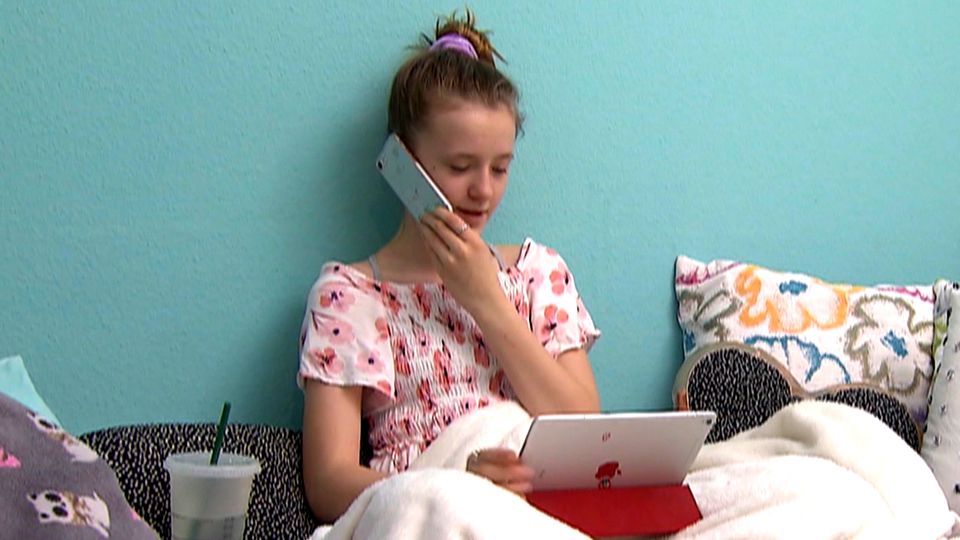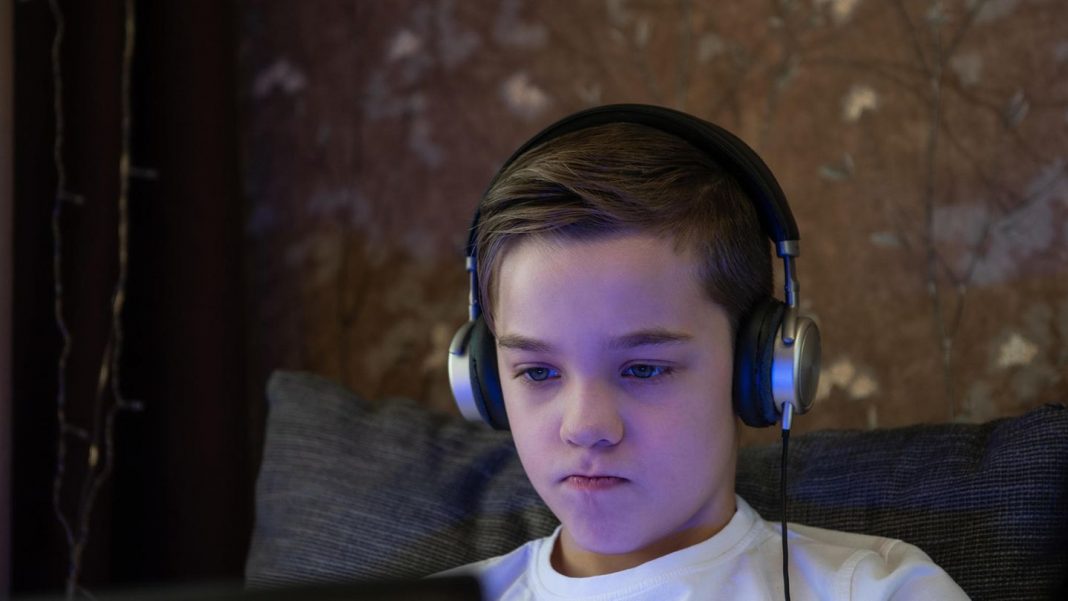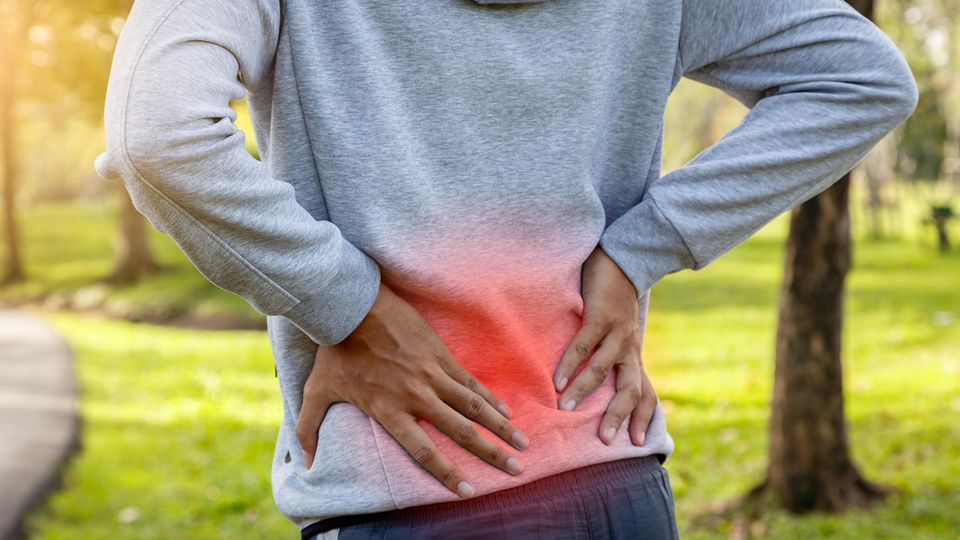“Physical Inactivity Pandemic”
Effects of the lockdown on children’s exercise behaviour

According to the JIM study, the daily Internet usage of 12 – to 19-year-olds increased from 205 minutes in 2019 to 258 minutes in 2020 (icon image)
© Ruslan Olinchuk / Picture Alliance
The coronavirus significantly restricts public and private life. Children are now also experiencing the effects of the lockdown: physical fitness is getting worse and worse.
The cliché that country children’s fitter than city children, is now obsolete. According to training and movement scientist Urs Granacher, this applies to Germany, as well as to other countries. “The reason is that there is an extreme decline in free play,” says the professor of training and Movement science at the University of Potsdam. “Movement outside without an organized framework hardly takes place anymore.”
In the countryside, too, computer activities in nature are usually preferred. If children were still moving outside school sports, then usually in sports clubs-and the offer in the city is usually much better than in the country. “If you don’t want to play football there, you can quickly get a problem,” says Granacher.
Physical fitness of children gets worse
The “Emotikon” study in Brandenburg, in which almost 200,000 third-graders had been included since 2009, showed above all a poorer stamina of children. This also applies in Germany and worldwide. “The physical fitness of children is considerably worse than 20, 30 years ago,” says Granacher. A term from the age medicine for the decline in strength, the dynapenia, is now also applied to children and referred to as pediatric dynapenia. “Affected children no longer have sufficient muscle strength for playful activities such as climbing on a climbing frame.”
At least 60 minutes of physical activity per day
The World Health Organization (WHO) recommends at least 60 minutes of physical activity daily for children and adolescents at moderate to high intensities. “That is the minimum recommendation,” says Granacher. Worldwide, a large proportion of children do not meet the recommendation; according to the most recently available data, 80 percent of young people do not move enough. “And that was before the pandemic.”
School and club sports, even the way to school fell away for months. “This is another fire accelerator,” the Stuttgart-based movement expert Clemens Becker is convinced. Within a year, a lot of muscle mass, coordination and endurance could be lost. Granacher also says that precisely because there is now less free play, the failure of school and club sports has a particularly strong effect.
Increasing Screen Times
“70 percent of children in Germany normally play club sports,” says Dietmar Pennig, Secretary General of the German Society for Orthopaedics and Trauma Surgery (DGOU) and the German Society for Trauma Surgery (DGU). The already existing co-ordinating losses would certainly have worsened in the wake of the pandemic. “Professional football was allowed to continue training – personally, the children would have been more important to me.”At least in the open there would have been much possible.
While many children often stayed outside in the first corona lockdown-in good spring weather – they moved considerably less than usual in the second corona lockdown, according to a study by Karlsruhe Institute of Technology (KIT). Another leisure activity increased immensely: media consumption. On average, the 4 – to 17-year-olds included in the study sat in front of screens 222 minutes a day, 28 minutes longer than in the first lockdown.
Lack of exercise in children has an impact on the entire life
While for a long time it was only television that banished children and young people to the couch for hours, today video games, Youtube videos and social media are added. According to the JIM study presented at the end of 2020, the daily Internet usage time of 12 to 19-year – olds alone rose from 205 minutes in 2019 to 258 minutes in 2020. Less exercise with higher media consumption-that is “a dangerous cocktail”, warns Granacher. There will certainly be long-term effects for the children concerned if appropriate measures are not taken.
Pennig is also convinced of this. A decrease in movement in this life-defining development phase has an impact on the entire life, says the medical director and chief physician at the St. Vinzenz Hospital in Cologne. On the one hand, children who lose more frequently when playing with their peers, for example because of more weight and worsened motor skills, often avoid romping and playing altogether. On the other hand, it is generally the case that the movement behavior solidifies in childhood and youth. Inactive children are most likely to become inactive adults.
Corona pandemic could become “physical inactivity pandemic”
According to the experts, it is now important to make up for the loss of coordination, strength and endurance if possible. For this purpose, targeted support offers must be created at the schools, says Granacher. “Otherwise, the Covid-19 pandemic threatens to become a physical inactivity pandemic with all the negative health consequences.”It has to be taken into account, if the physical education can take place again regularly, that it can not start at the same fitness level as before. “The risk of injury has probably increased considerably.”First of all, physical fitness needs to be specifically rebuilt for two to three months.

This is all the more important since it also has a positive effect on many other factors such as attention and ability to concentrate. “There is already an approach to prescribing training in the way you would prescribe a drug,” says Granacher. “No pill can match the wide spectrum of physical activity and sport.”



